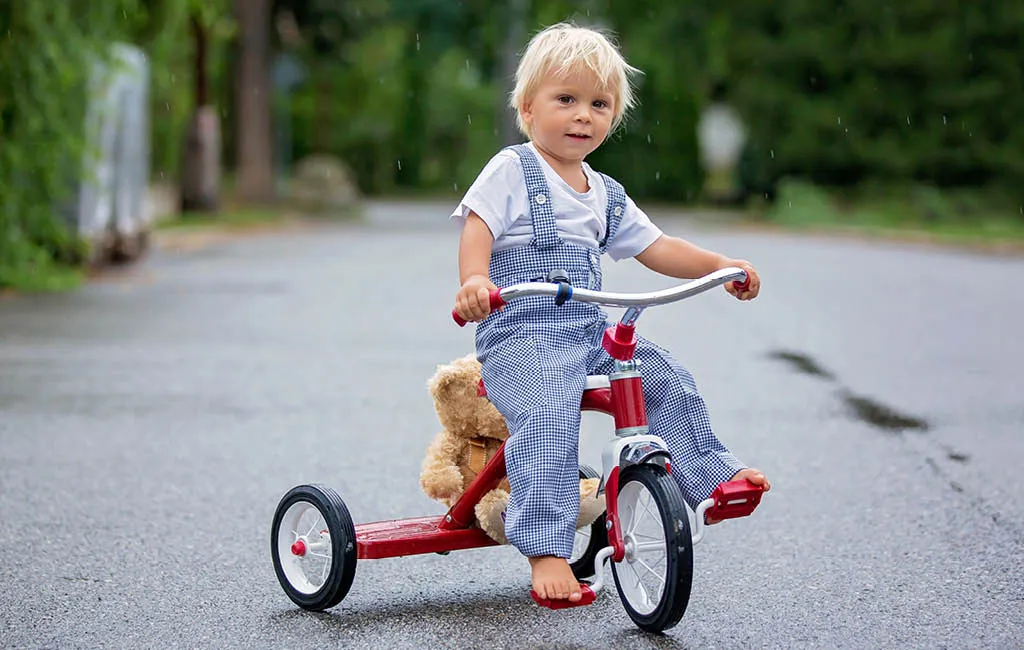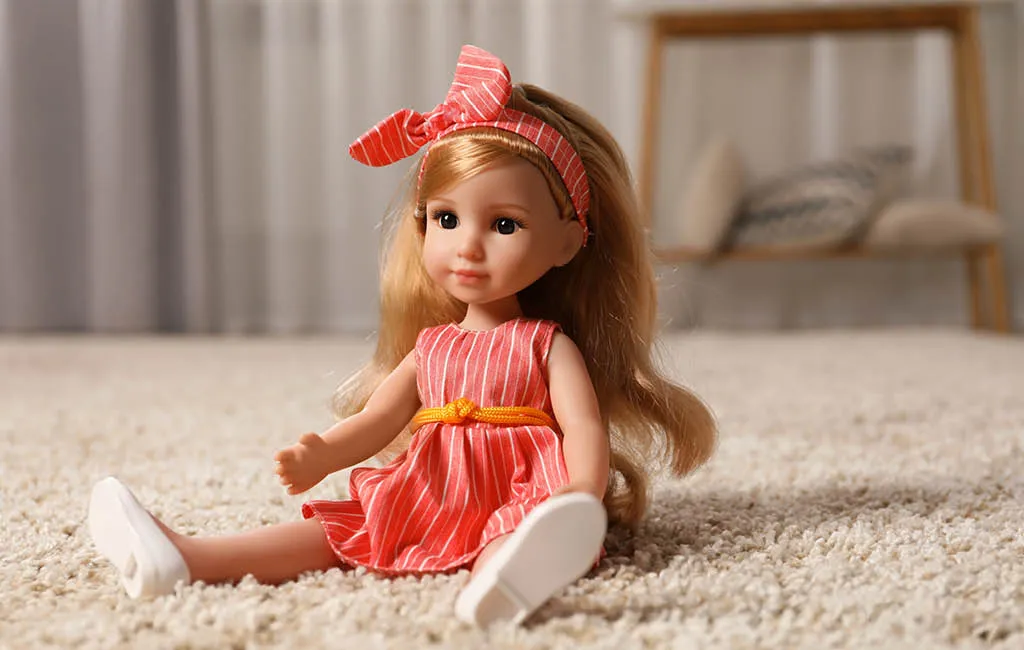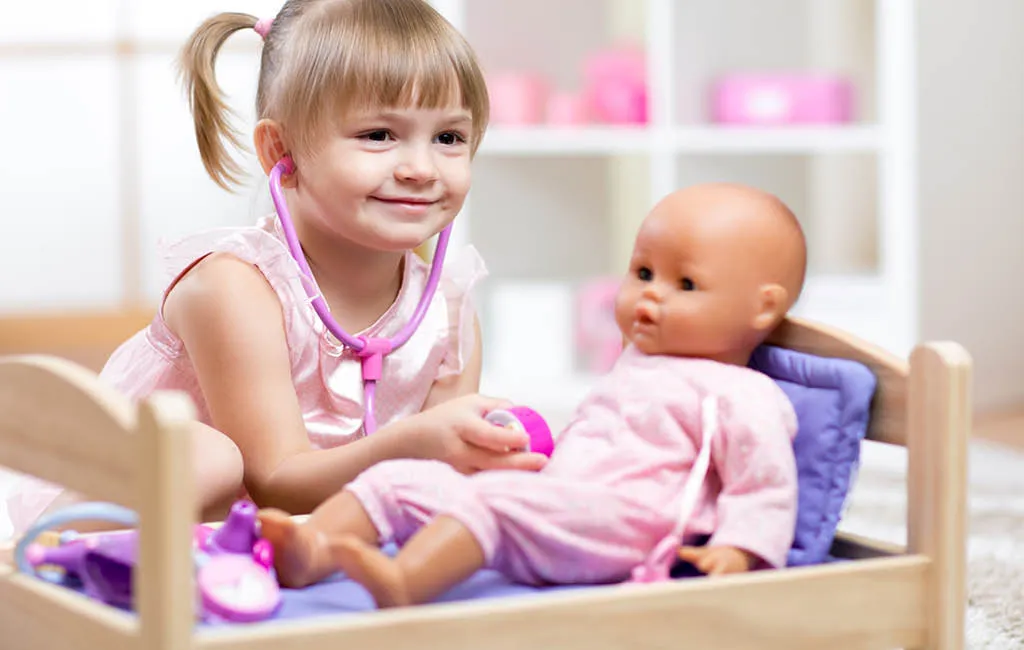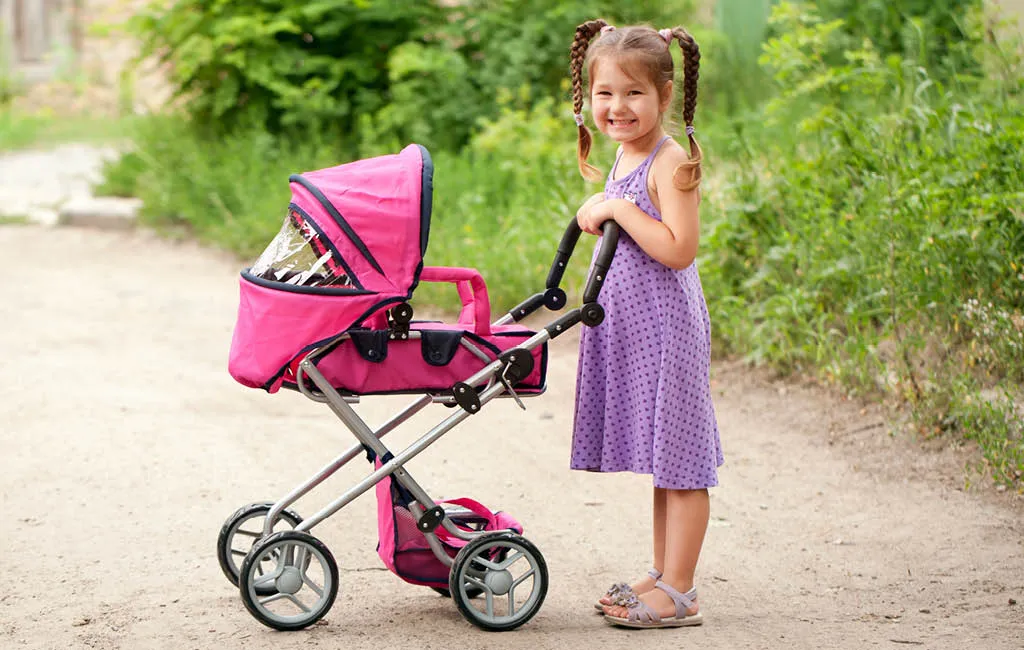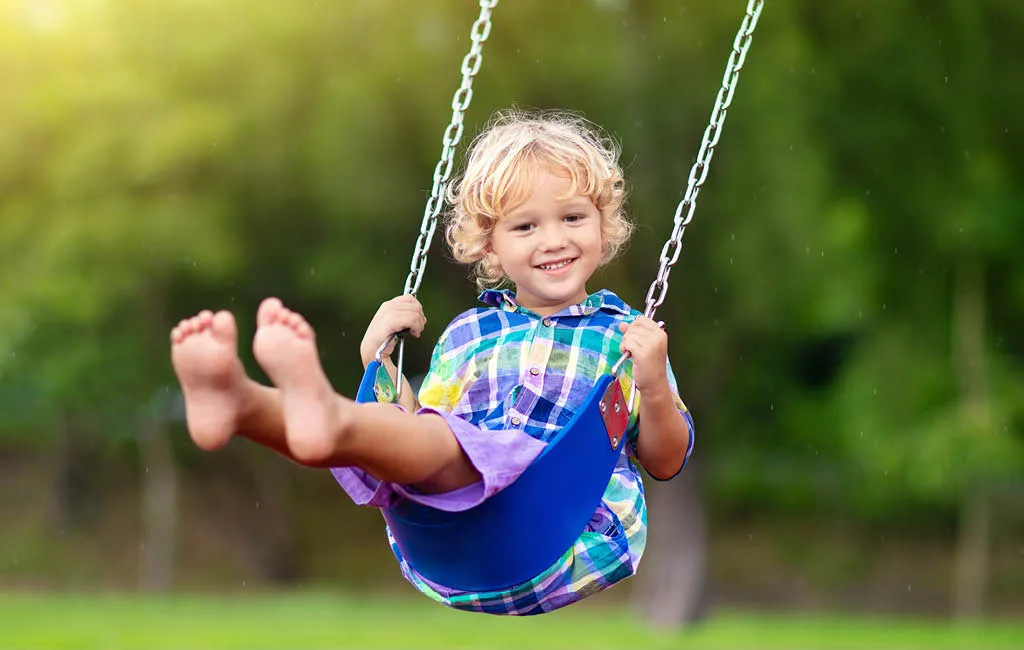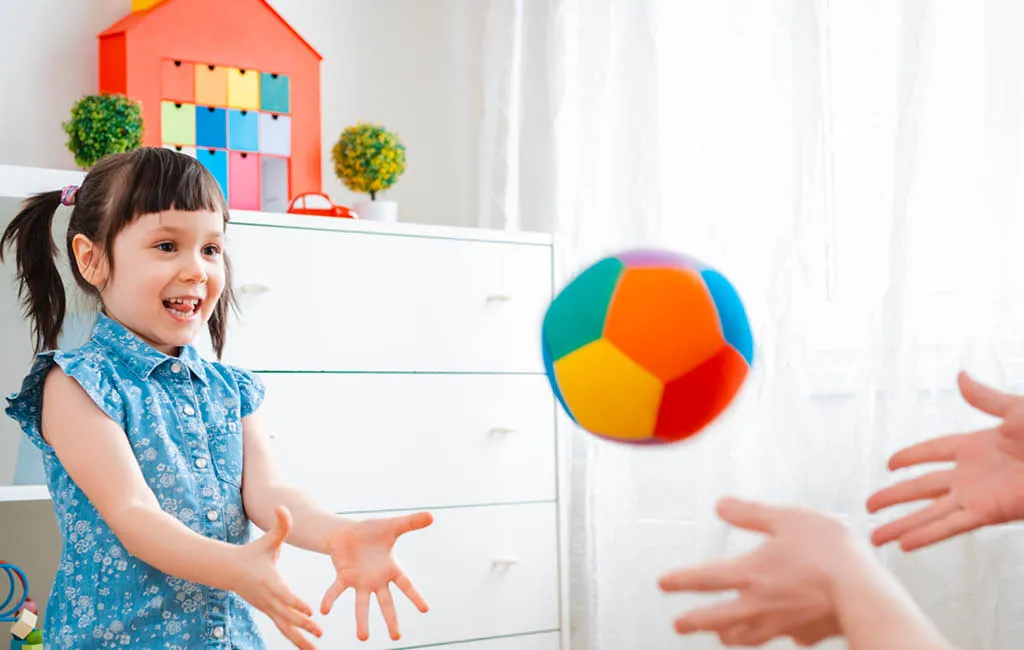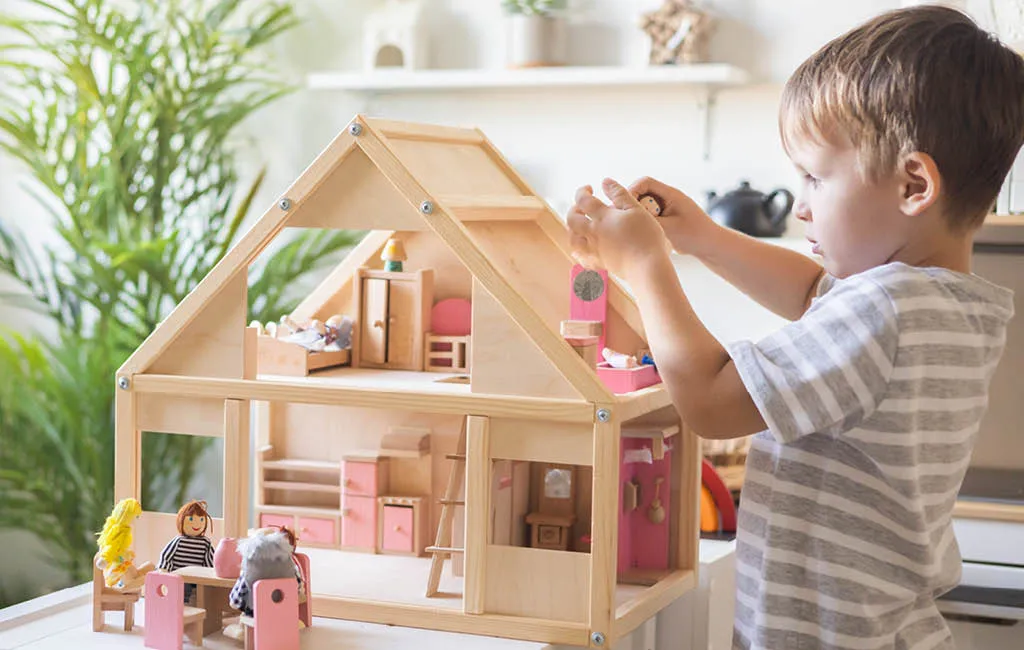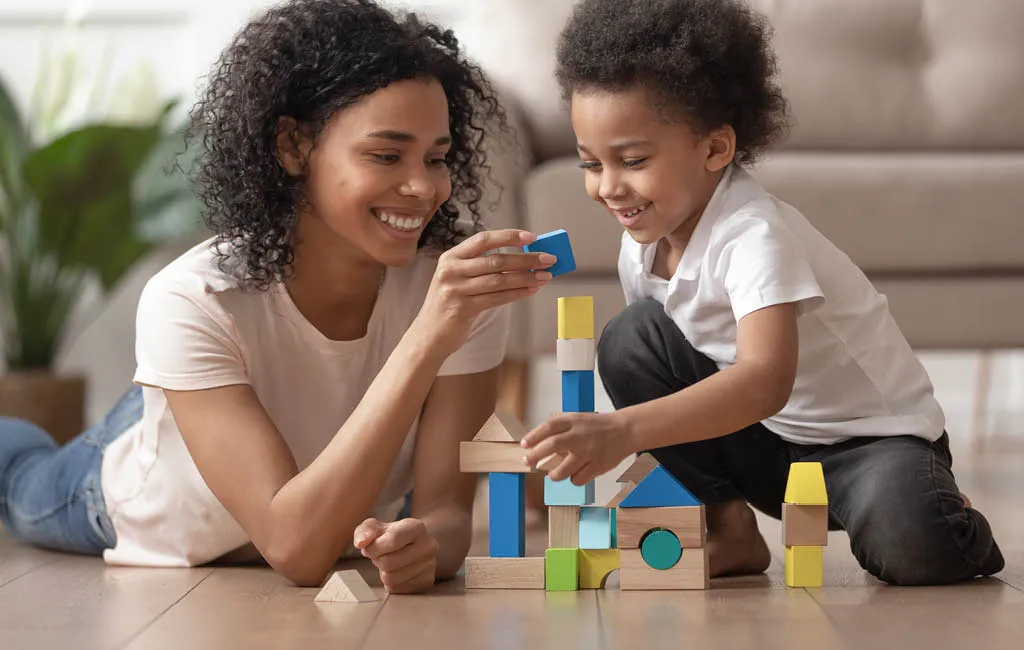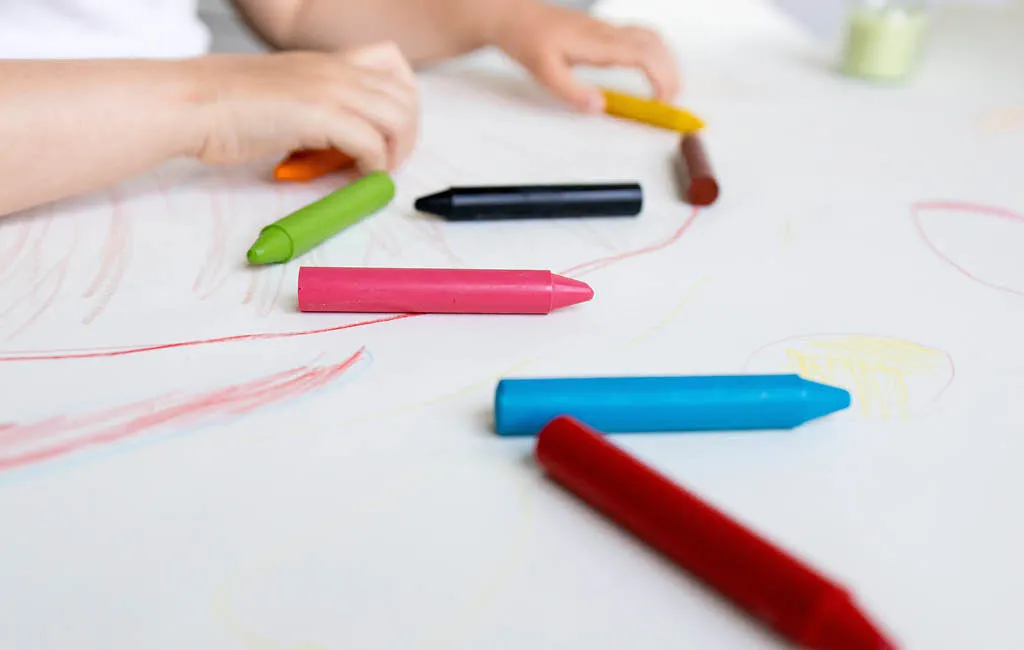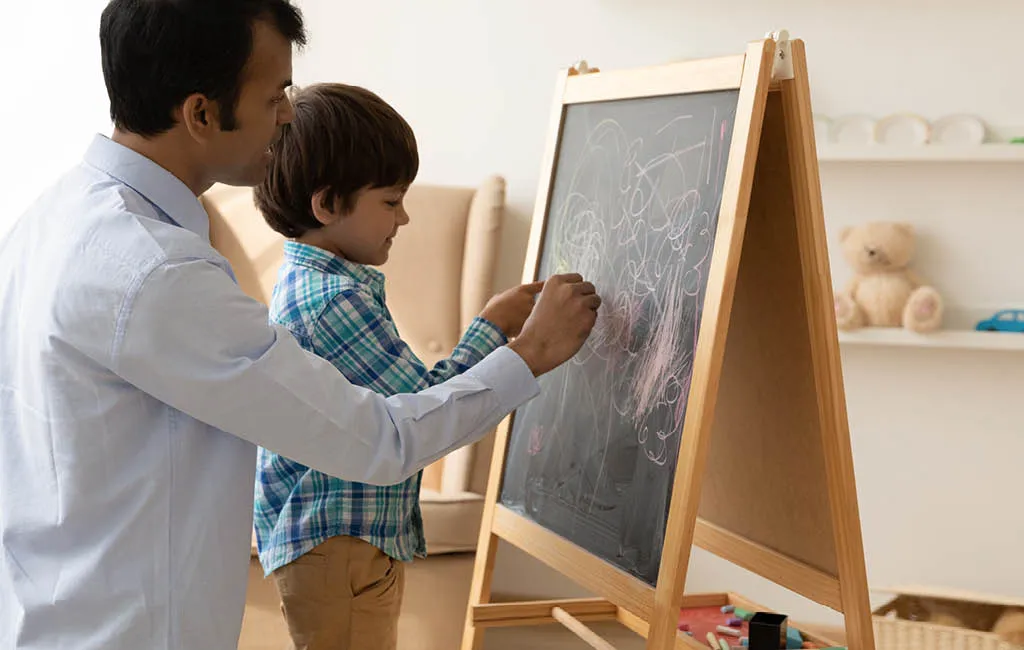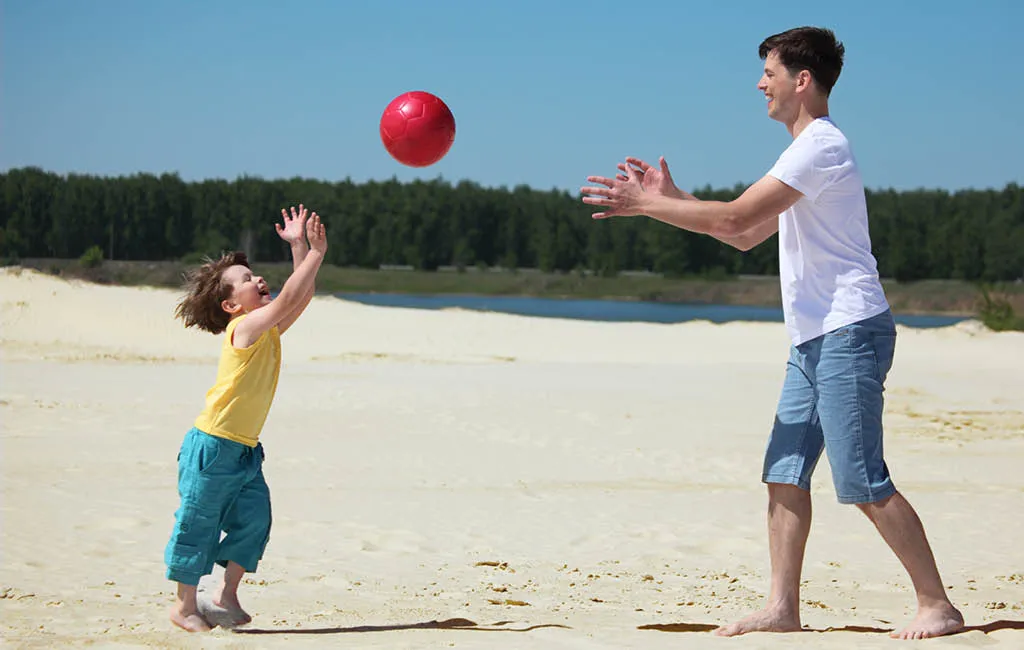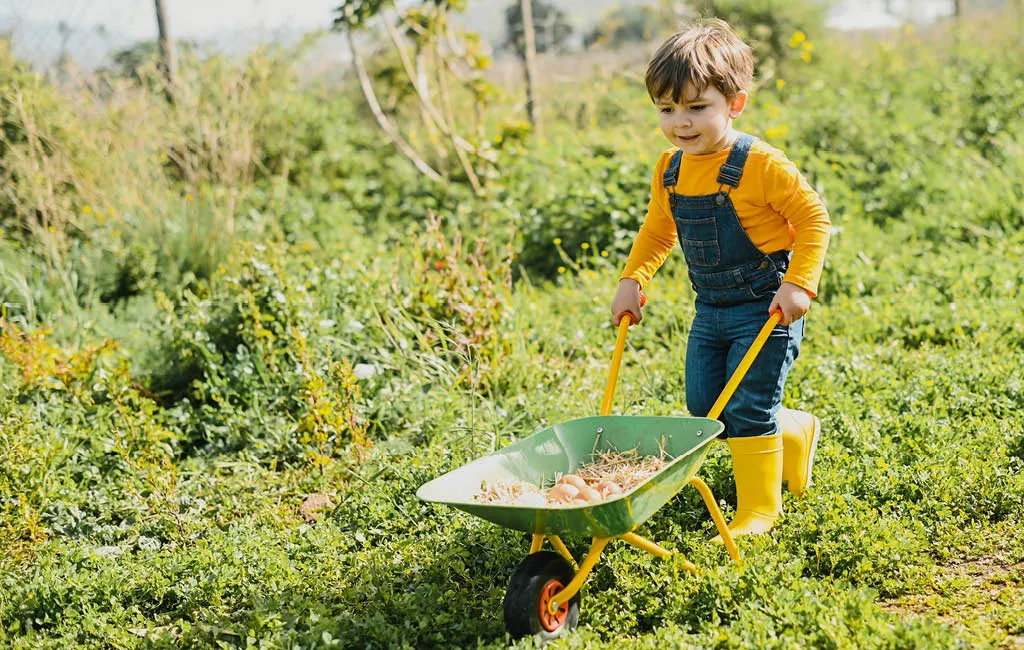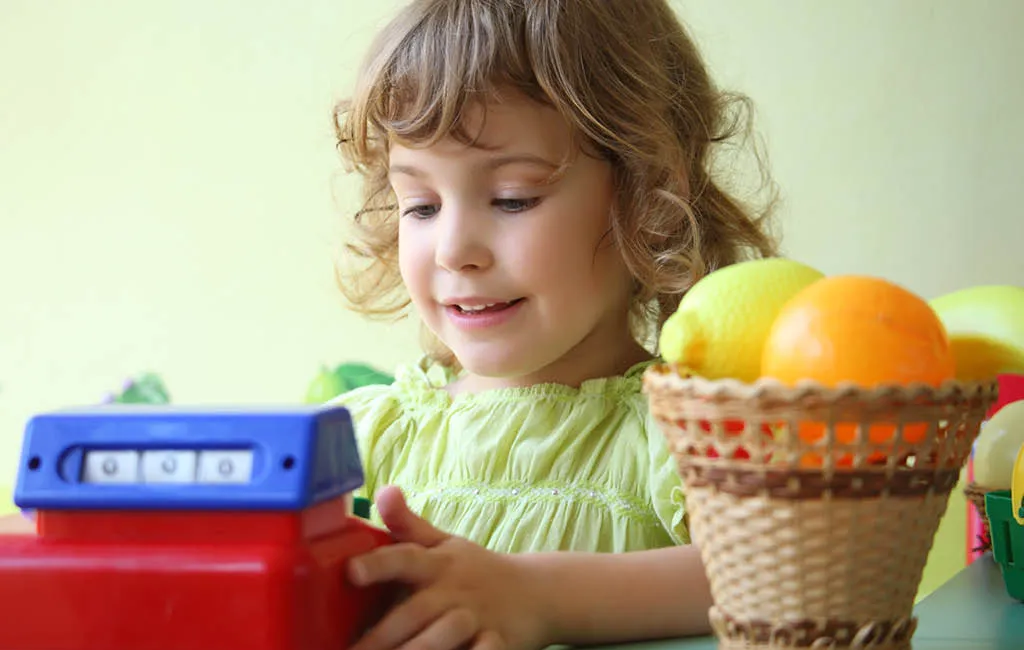Tricycle
The tricycle is very popular with many children. The tricycle is very popular with many children. They enjoy joining regular walks with mom or dad. If the strength for pedaling is not yet sufficient, parents help by pushing. For this, a push bar attached by the parents or even a simple broom handle is enough.
Doll
A doll with long hair invites children to brush, braid, decorate with clips, or try out different hairstyles. With a selection of doll clothes, it encourages varied role play, such as visiting the doctor, going on a visit, or playing hairdresser.
Doll’s bed
A doll’s bed gives children the opportunity to put their doll to sleep, tuck it in, or rock it to sleep. Through this kind of care, they develop empathy and act out everyday situations, such as bedtime or when someone is sick.
Doll stroller
A doll stroller gives children the opportunity to take their doll everywhere and reenact little walks. They experience how nice it is to take responsibility and to care lovingly for their doll.
Swing
A swing is a classic on playgrounds and in gardens. Children learn to swing in rhythm while at the same time improving their balance. A swing provides not only movement but also moments of relaxation.
Board games
Board games bring the whole family together at one table. Children learn to understand rules and to cope with winning or losing. At the same time, they promote language, concentration, and the joy of playing together with parents.
Softball
A softball is light and soft, so it is suitable for throwing and catching both indoors and outdoors. As a quick game in between, it brings joy to every child, especially when parents join in. At the same time, children improve their motor skills and reaction ability.
Doll’s house
A doll’s house invites children to invent their own little stories, such as when visitors come over for coffee. While arranging, rearranging and playing, they develop imagination and act out situations they know from everyday life.
Building blocks
Building blocks encourage children to create towers, houses or other structures. While stacking and building, they practice their fine motor skills, develop spatial awareness and experience how something new emerges from simple blocks.
Crayons
Thick wax crayons are especially suitable for young children because they fit well in small hands. While drawing, they put their own ideas on paper and practice holding the crayon in a relaxed way. This improves their fine motor skills and playfully prepares them for later writing.
Chalkboard
A chalkboard gives children plenty of space for spontaneous doodles, either on their own or together with mom or dad. Children also enjoy drawing while standing and moving freely. At the same time, drawing supports the motor skills of hands and fingers.
Toolbox
A toolbox encourages children to hammer, screw and build. In the process, they practice their fine motor skills and act out activities they observe in adults, for example when parents repair or assemble furniture.
Kite
A kite fascinates children when it floats high in the sky and combines play with movement in the fresh air. They run across meadows, skillfully keep the kite in the air and watch how the wind carries it.
Ball
Ball games are popular among children of all ages. They roll, throw, kick or catch the ball and stay constantly in motion. Ball games provide not only fun but also promote important skills such as reaction, dexterity and concentration.
Wheelbarrow
A children’s wheelbarrow invites kids to transport things like toys, sand, or leaves and soil in the garden. While pushing, they practice keeping the wheelbarrow in balance and learn to take on small tasks for their parents.
Play store
A play store gives children space for imaginative role play, whether alone or with a partner. They sell fruit and vegetables, count groceries and calculate small amounts. In the process, they expand their vocabulary and enjoy playing together with mom or dad.

